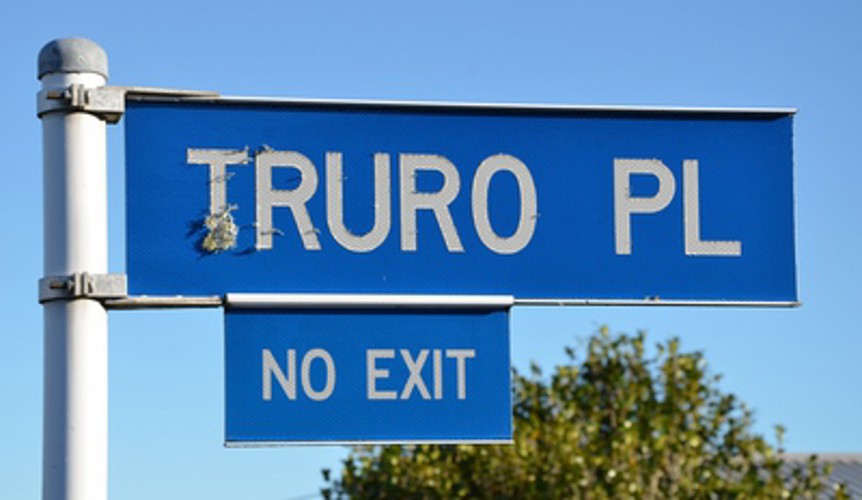 Truro Place sign (2014). Mike Gooch. Word on the Street image collection.
Truro Place sign (2014). Mike Gooch. Word on the Street image collection.
 Truro Place sign (2014). Mike Gooch. Word on the Street image collection.
Truro Place sign (2014). Mike Gooch. Word on the Street image collection.
This short cul-de-sac hasn't always sported the name Truro. In fact, in the early days it was planned to become a link between David Street and Dorset Avenue, and was rather prosaically labelled Dorset Avenue Extension.
When, in 1977, it became clear it was unlikely to be joined up to Dorset Avenue any time soon, it became officially known as Truro Place.
Truro city is in fact the administrative centre for Cornwall in the UK, which is of course the region from which many settlers came to New Plymouth. It began as an important centre for trade and later as a stannary town administering the important tin mining activity in the region.
It is the home of Cornwall's Courts of Justice, the Cornwall Council and the Royal Cornwall Museum.
The name Truro has contested origins. Some say it is derived from the Cornish tri-veru meaning "three rivers". An authority on Cornish names, Oliver Padel, says this is possible; however, the Oxford Dictionary of English Place Names rejects the idea.
Major features are the gothic-revival cathedral by architect John Loughborough, which was built between 1880 and 1910, and the indoor Pannier Market reflecting its historic role as a market town.
Its famous citizenry include the great African explorer Richard Lemon Lander and, especially for rock music enthusiasts, it is the birth place of Roger Meddows Taylor, the drummer from Queen.
It seems hard to believe that as late as 1977 we were still naming streets after places in the UK that sent the first settlers, but I guess it is consistent with the surrounding streets that have names such as Dorset and Dartmoor.
Certainly elsewhere in New Plymouth, at that time, newer subdivision had moved away from that convention.
This story was originally published in the Taranaki Daily News.
Please do not reproduce these images without permission from Puke Ariki.
Contact us for more information or you can order images online here.